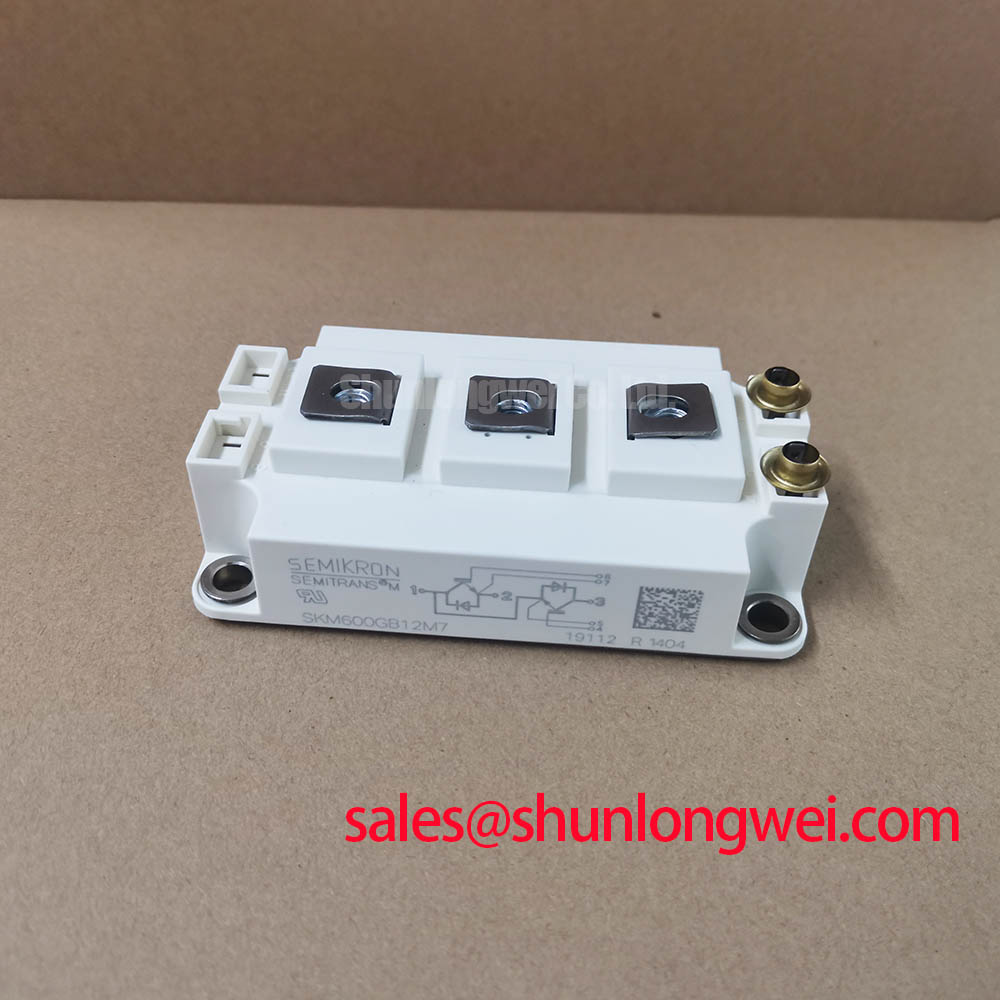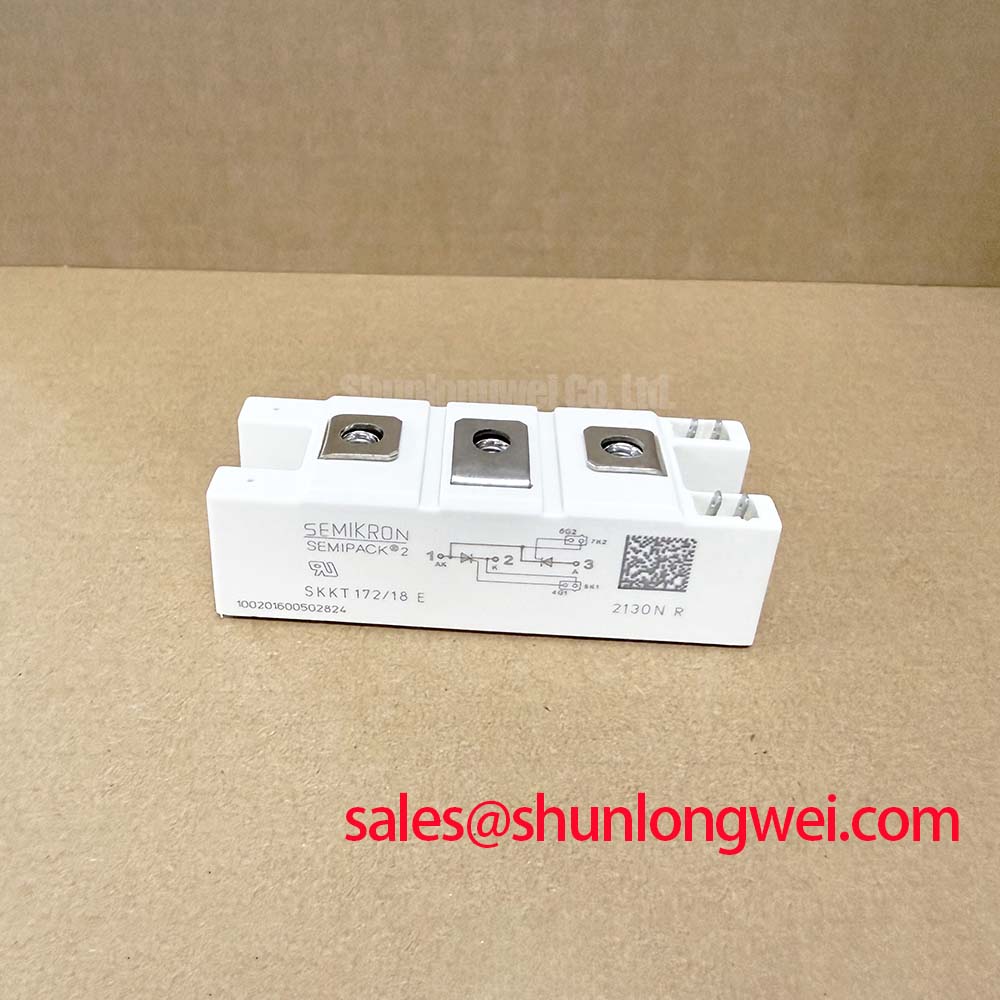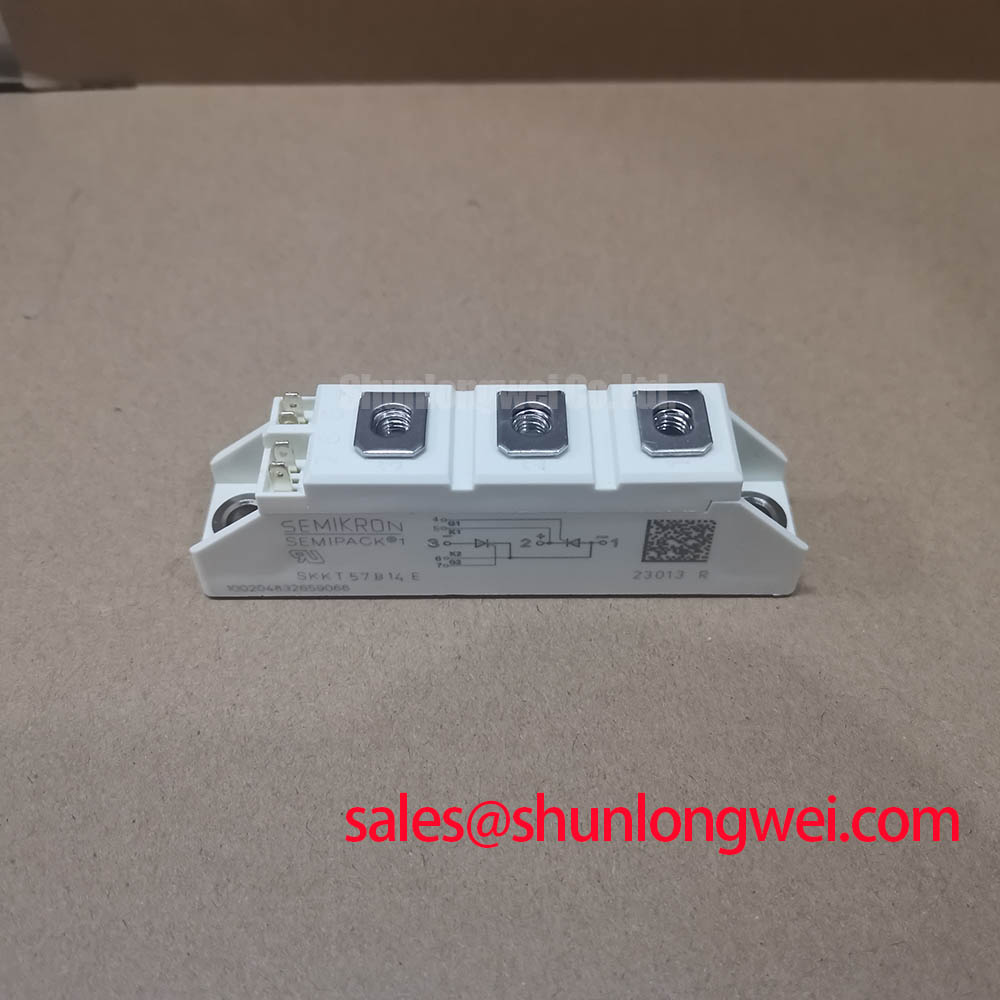SKKH250/18E | 1800V Thyristor/Diode Module for High-Reliability Power Control
Content last revised on October 13, 2025.
An Engineering-Focused Overview of the SKKH250/18E
Defining Robustness in High-Stress Power Applications
The SKKH250/18E is a thyristor/diode module engineered for exceptional long-term reliability in demanding industrial power control applications. Featuring key specifications of 1800V | 250A (I(TAVM)) | I(TSM) 12500A, this module delivers superior surge current survivability and an enhanced operational lifetime. It directly addresses the need for robust power control on volatile industrial grids, such as 690V AC lines, by providing a high 1800V blocking voltage for a significant safety margin against transients. For controlled rectifiers and soft starters where surge current immunity is a design priority, the SKKH250/18E's 12.5 kA surge rating offers unparalleled system robustness.
Key Parameter Overview
Decoding the Specs for Enhanced Operational Robustness
The technical specifications of the SKKH250/18E are optimized for performance and reliability in demanding power control circuits. The parameters below are grouped by function to facilitate engineering evaluation.
| SKKH250/18E Key Specifications | ||
|---|---|---|
| Thyristor Characteristics (per thyristor at Tj=25°C unless otherwise specified) | ||
| Parameter | Value | Notes |
| Repetitive Peak Off-State Voltage (VDRM, VRRM) | 1800 V | Provides substantial margin for use on 690V AC mains. |
| RMS On-State Current (IT(RMS)) | 400 A | Defines the continuous current handling capability. |
| Average On-State Current (IT(AVM)) | 250 A | (sin 180; Tcase = 78°C) |
| Surge On-State Current (ITSM) | 12500 A | (Tj = 130°C, 10ms) Critical for surviving fault conditions and motor inrush. |
| I²t Value | 781250 A²s | Essential data for proper fuse selection and system protection coordination. |
| Diode Characteristics (per diode at Tj=25°C unless otherwise specified) | ||
| Repetitive Peak Reverse Voltage (VRRM) | 1800 V | Matches the thyristor rating for balanced performance. |
| Average Forward Current (IF(AVM)) | 250 A | (sin 180; Tcase = 78°C) |
| Surge Forward Current (IFSM) | 10500 A | (Tj = 130°C, 10ms) Ensures diode robustness during system faults. |
| Thermal and Mechanical Characteristics | ||
| Operating Junction Temperature (Tj) | -40 to +130 °C | Wide operating range suitable for industrial environments. |
| Thermal Resistance, Junction to Case (Rth(j-c)) | 0.110 °C/W (per thyristor) / 0.130 °C/W (per diode) | Indicates efficient heat transfer to the heatsink. |
| Insulation Test Voltage (Visol) | 3000 V (AC, 1 min.) | Ensures galvanic isolation for safety and system integrity. |
Download the SKKH250/18E datasheet for detailed specifications and performance curves.
Application Scenarios & Value
Achieving System-Level Reliability in Industrial Motor Drives and Power Supplies
The SKKH250/18E is ideally suited for power conversion systems where reliability and precise control are non-negotiable. Its high surge current capability makes it a first-choice component for demanding industrial applications.
A primary use case is in Soft Starters for medium to large AC induction motors. The engineering challenge here is managing the significant inrush current during motor startup, which can be 6-8 times the nominal current. The SKKH250/18E's exceptional I(TSM) of 12,500 Amperes acts like a robust shock absorber, easily withstanding these repetitive current peaks without stress or degradation. This capability is crucial for reliable Fuse Coordination, ensuring that overcurrent protection devices are not falsely tripped during normal operation while still protecting the system under true fault conditions.
Other key applications include:
- Controlled Rectifiers: For creating regulated DC voltages from an AC source, used in industrial DC power supplies and battery charging systems.
- AC Power Controllers: In applications like industrial heating and lighting control, where its phase angle control capability allows for efficient power regulation.
The module's integrated half-bridge configuration, containing both thyristors and freewheeling diodes, simplifies the design of these systems. For applications with lower power requirements, the related SKKH106/16E provides a similar architecture in a lower current package.
Technical Deep Dive
A Closer Look at the Hard-Solder Design for Long-Term Reliability
A key differentiator of the SKKH250/18E is its internal construction, which utilizes hard-soldered joints. This technology is central to its enhanced reliability and extended operational life. To understand its value, consider the primary failure mechanism in many power modules: solder fatigue. A standard soft-soldered joint is like gluing two surfaces together; while initially strong, repeated thermal cycles—the expansion and contraction from heating up during operation and cooling down—can introduce micro-cracks that eventually lead to failure. This is particularly prevalent in applications involving frequent start/stop cycles, such as AC Motor Control.
The hard-soldered construction in this Semikron Danfoss module is fundamentally different. It's more analogous to welding metal components. The process creates a superior metallurgical bond that is far more resilient to the stresses of thermal expansion. This significantly increases the module's power cycling capability, directly translating to a longer, more predictable service life and reducing the total cost of ownership by minimizing downtime and maintenance requirements in critical systems.
Frequently Asked Questions
Engineering Questions on the SKKH250/18E
What is the primary engineering advantage of the hard-soldered joint construction in the SKKH250/18E?
The main advantage is a dramatic improvement in operational lifetime and reliability. By creating a more robust bond between the chip and the substrate, it effectively mitigates solder fatigue, which is a common failure point in conventional modules. This results in superior power and thermal cycling capability, making it an ideal choice for applications with frequent on/off cycles or fluctuating loads.
How does the 12,500A I(TSM) rating benefit system design in a practical application like a soft starter?
This high non-repetitive surge current rating provides the essential robustness needed to withstand large motor inrush currents without damage. For a design engineer, this means a greater safety margin, which can simplify the design of protection circuits and allow for more reliable overcurrent protection. It ensures the drive system's long-term reliability by preventing component degradation from the electrical stress of repeated motor starts.
To evaluate the SKKH250/18E for your next high-reliability power control design, or to discuss your specific application requirements, please contact our technical sales team for further information and component sourcing.

















